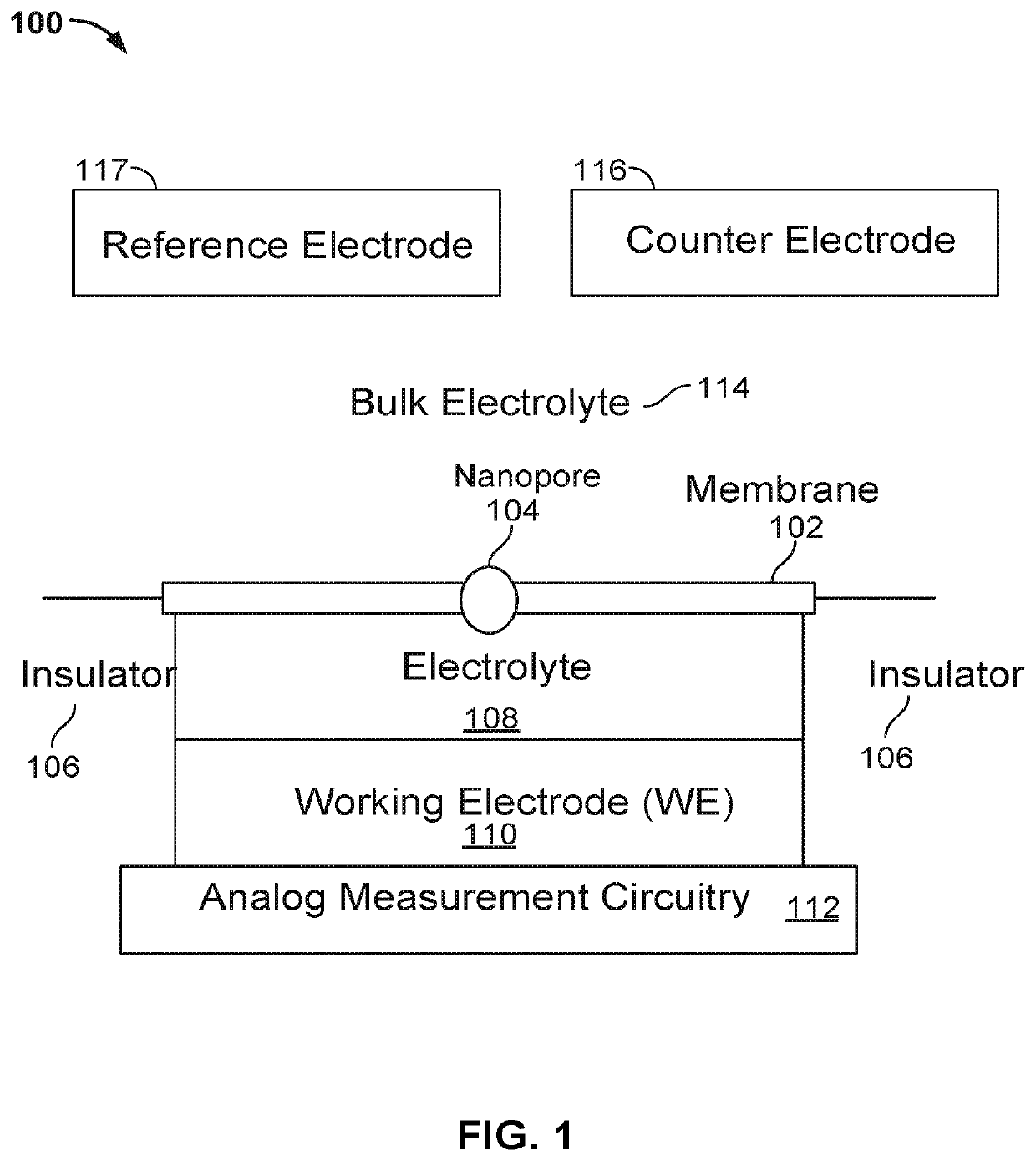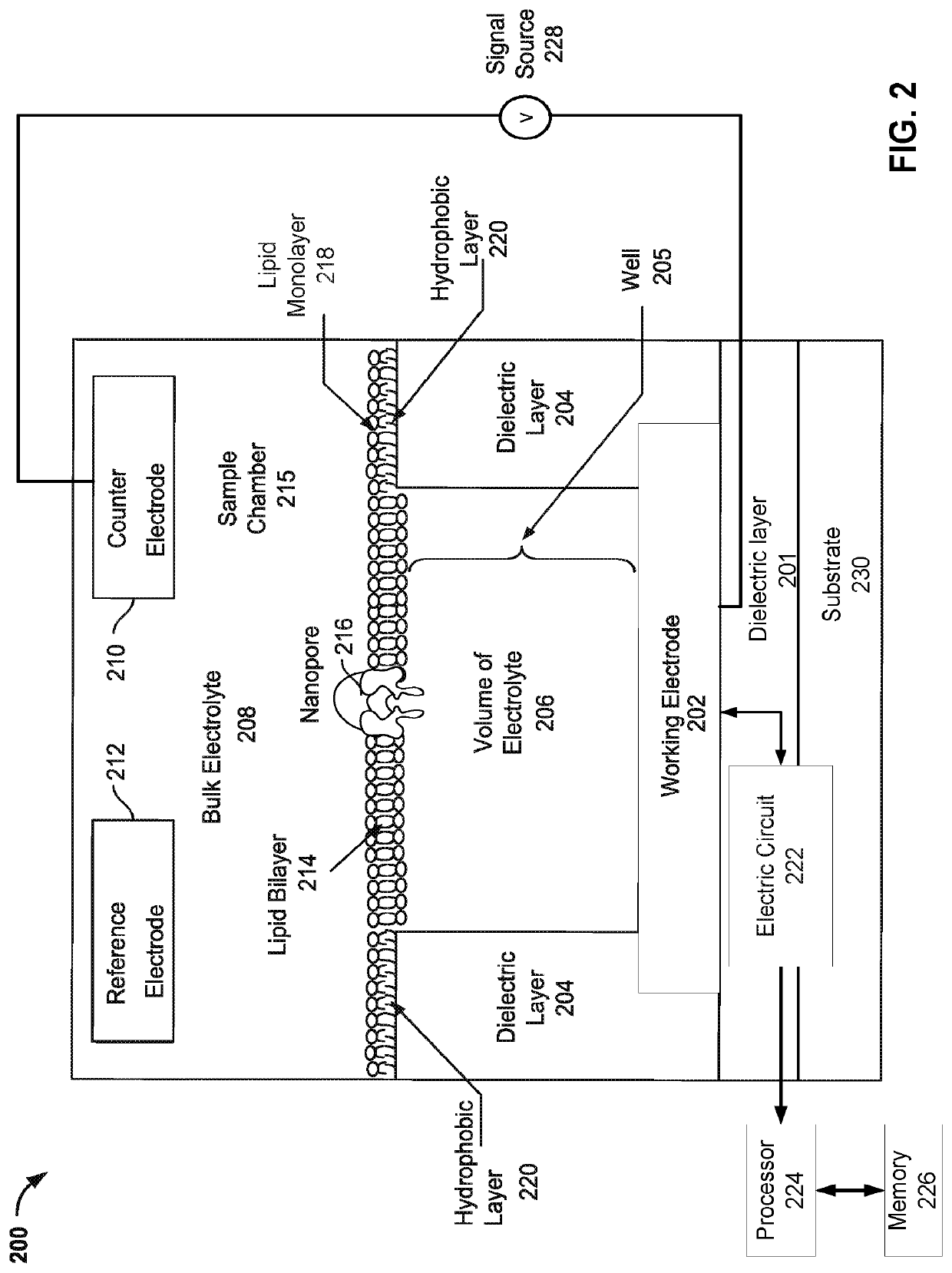Multiplexing analog components in biochemical sensor arrays
a biochemical sensor and array technology, applied in biochemical instruments, biochemical apparatus and processes, material analysis, etc., can solve the problems of reducing the size of analog components, significantly affecting the performance of the sensor cell, and difficult to perform the check without using an additional capacitor, so as to reduce the area of each sensor cell, reduce the size of each digital component, and reduce the effect of each sensor cell area
- Summary
- Abstract
- Description
- Claims
- Application Information
AI Technical Summary
Benefits of technology
Problems solved by technology
Method used
Image
Examples
Embodiment Construction
[0032]Techniques disclosed herein relate to nanopore-based nucleic acid sequencing, and more specifically, to increasing the cell density or increasing the number of nanopore cells on a nanopore-based sequencing sensor chip that includes a large number of parallel sequencing nanopore cells. In order to increase the throughput of the sensor chip, it is desirable to increase the number of cells in the sensor chip. The number of cells that can fit on a sensor chip may be limited by the minimum size of each cell, which may include some digital circuit components (e.g., SRAM or switches) and analog circuit components (e.g., capacitors, buffers, amplifiers, etc.). The minimum size of the cell may be limited by the size of the analog circuit components. Thus, to increase the density of cells on the sensor chip, the total area used by the analog circuit components needs to be reduced.
[0033]Certain techniques disclosed herein reduce the average size of the cells on a sensor chip by sharing s...
PUM
| Property | Measurement | Unit |
|---|---|---|
| internal diameter | aaaaa | aaaaa |
| integration time | aaaaa | aaaaa |
| integration time | aaaaa | aaaaa |
Abstract
Description
Claims
Application Information
 Login to View More
Login to View More - R&D
- Intellectual Property
- Life Sciences
- Materials
- Tech Scout
- Unparalleled Data Quality
- Higher Quality Content
- 60% Fewer Hallucinations
Browse by: Latest US Patents, China's latest patents, Technical Efficacy Thesaurus, Application Domain, Technology Topic, Popular Technical Reports.
© 2025 PatSnap. All rights reserved.Legal|Privacy policy|Modern Slavery Act Transparency Statement|Sitemap|About US| Contact US: help@patsnap.com



